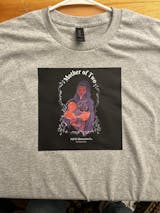DTF printing (Direct to Film) machines attract attention as an innovative printing technology that revolutionizes the textile industry. Offering more flexible and diverse applications than traditional printing techniques, DTF is known for its ability to make vibrant and durable prints, especially on textile products.
- Printing Mechanism: DTF printing machines use the ink jet technique on a special film.
- Ink Nozzle Head: DTF printing machines have one or more nozzle heads to accurately spray ink onto the film. These heads allow fine details and high resolution to be achieved.
- Printing Film: A specially designed film is used for DTF transfer technolohy. This film has a special surface that has a high ability to retain ink and also allows printing to be transferred.
- Printing Beds and Mechanical Movement System: Machine beds and mechanical movement system are important to ensure the precision of the printing process. This system ensures correct positioning of the print head and film.
DTF Machine Ink System
Custom DTF printing machines use special inks in a variety of colors. This ink system consists of the following components:
- Ink Cartridges: Cartridges, each designed for a specific color. Ink cartridges are optimized for easy replacement and monitoring of ink levels.
- White Ink System: White ink plays an important role in DTF printing because it provides a base layer on which other colors can be printed. This system ensures that white ink is mixed and applied correctly.
- Ink Circulation System: Constant circulation of ink is required for the ink system to function properly. This prevents the ink from clotting and improves print quality.
After the custom heat transfer printing process is completed, the ink needs to be dried and fixed. A drying unit is used to dry the ink on the film quickly and evenly. This unit can operate through heaters or air blowers. A special powder is applied to the film before drying. This powder ensures adhesion when transferring the ink to the fabric. This process increases the durability of DTF prints.
In the final stage of the printing process, a heat press machine is used to transfer the print to the fabric. This machine provides the necessary heat and pressure to fix the print on the fabric and increase its durability.
DTF Machine Features
DTF printing machines feature advanced control and automation systems to ensure precision and consistency of the printing process:
- Digital Control Unit: Digital control unit is used to set printing parameters and monitor the printing process. This unit controls the movement of the print head, ink flow and other critical factors.
- Sensors and Sensors: Various sensors and sensors are used to monitor the printing process and prevent errors. These sensors monitor ink levels and factors such as temperature and pressure.
- Supporting Components: Some supporting components are also required for efficient operation of DTF printing machines:
- Air Filtration System: Gases and dust generated during the printing process are cleaned by the air filtration system. This ensures the safety and cleanliness of the printing environment.
- Maintenance and Cleaning Equipment: DTF printing machines require regular maintenance and cleaning for a long life. These equipment are used for cleaning print heads and other components.
- Spare Parts and Accessories: Spare parts and accessories are available to increase the functionality of DTF printing machines and eliminate possible malfunctions.
DTF printing machines are an innovative technology that offers a wide range of applications in the textile industry, including the custom gang sheet method. Understanding their basic components and working principles ensures effective use of these machines and helps in achieving high quality prints. DTF technology is likely to become more widespread in the printing industry in the future because it offers flexibility and high quality to users.



